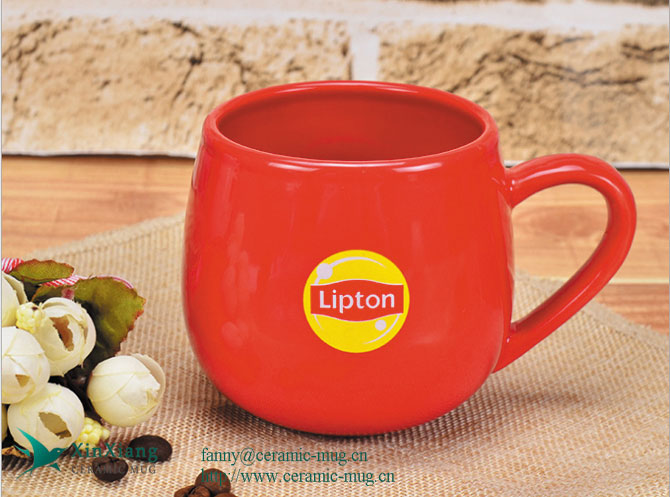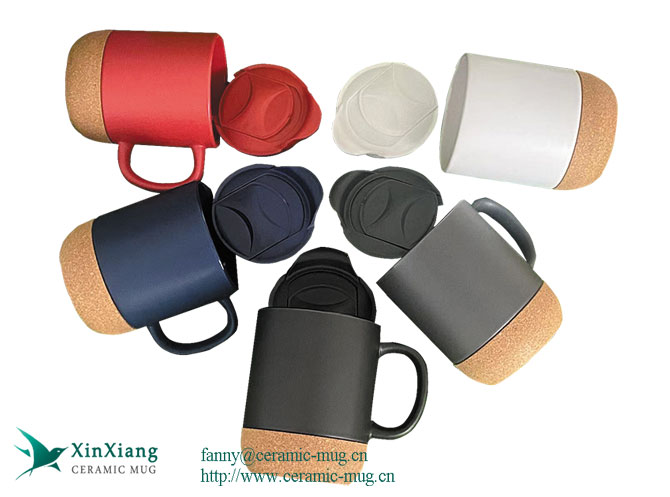|
|
|
 |
Now : Home > Ceramic Mug News |
|
|
Advantages of colored glaze mugs And types and process of glaze |
| Ceramic Mug From:Xinxiang Ceramic Mug Manufacturers 2023-8-16 |
|
Xinxiang Ceramic Mug Manufacturer, The colored glaze mug is a kind of ceramic mug. Its special feature is that its glaze has been specially treated to produce various color effects when fired. The production of colored glaze mugs requires exquisite craftsmanship. It is necessary to pay attention to the selection and proportion of materials, and also to master the fire and temperature of firing, so as to produce colored glaze mugs with fine texture, rich color and not easy to fade. The main function of colored glaze mugs: coffee mugs and ceramic gifts.

Advantages of colored glaze mugs
1. High degree of firing porcelain, good strength; delicate and bright glaze; high stability to acid and alkali, easy to clean and clean.
2. The pattern LOGO can be decorated according to the customer's requirements, and it is produced with low-lead and low-cadmium raw materials, which has no effect on human body health. It can pass various environmental certifications in Europe and America.
3. Suitable for all kinds of coffee and tea. It has a certain heat and cold stability, and can be used in microwave ovens, ovens, and dishwashers.
4. The price is cheap, and the packaging can be customized according to customer requirements.
History of colored glaze mugs
The history of colored glaze cups can be traced back to ancient times, and it first appeared in the Han Dynasty in China. At that time, colored glaze cups had been widely used in daily life, including food, entertainment and so on. The craftsmen at that time created rich and colorful colored glaze effects by mixing and using various glazes, such as blue and white, meat red, tea gray and so on.
With the passage of time, the production process of colored glaze mugs has gradually improved, and new glazes and techniques have also emerged. During the Song Dynasty, colored glaze mugs such as Yue Kiln celadon and Ding Kiln white porcelain were widely used and praised. During the Ming and Qing Dynasties, Jingdezhen became an important producing area of Chinese ceramics, and many distinctive colored glaze mugs appeared, such as multicolored mugs, pastel mugs, and red glazed mugs. Now, Shandong Zibo, Liling, Jingdezhen, Chaozhou and Tangshan have become the main producing areas of colored glaze mugs.

The main difference between colored glaze mugs and other mugs is the glaze. Next, Xinxiang Ceramics Factory will introduce the glaze of the colored glaze mug.
Glaze
Glaze is a colorless or colored glassy thin layer covering the surface of ceramic products. It is made of mineral raw materials (feldspar, quartz, talc, kaolin, etc.) and raw materials in a certain proportion (some raw materials can be made into frit first) Grinding to make a glaze slurry, applying it on the surface of the green body, and calcining at a certain temperature. It can increase the mechanical strength, thermal stability and dielectric strength of the product, and it also has the characteristics of beautifying utensils, being easy to wipe and cleaning, and not being corroded by dust and filth.
Types of glaze
There are many types of glazes, which can be divided into enamel glaze, pottery glaze and flint glaze according to the body; according to the firing temperature, it can be divided into high temperature glaze and low temperature glaze; according to the appearance characteristics, it can be divided into transparent glaze, opacity glaze, color glaze, glossy Glaze, matte glaze, cracked glaze (open sheet), crystal glaze, etc.; according to the glaze composition, it can be divided into lime glaze, feldspar glaze, lead glaze, lead-free glaze, boron glaze, lead-boron glaze, etc.
1. Tang Sancai, popular in the Tang Dynasty, is a plain-fired carcass painted with white, green, brown, and yellow glazes, and baked at 1100 degrees. It was mostly used as funerary objects at that time;
2. On-glaze color, which is painted on the fired plain ware, and then baked at low temperature. Because the color is attached to the glaze, it is named. It was first seen in the Song Dynasty;
3. Underglaze color, painted on the green body, then glazed and fired at high temperature, the color pattern will never fall off under the glaze.
4. Underglaze red, painted on the tire with copper oxide as the colorant, and fired at high temperature after glazing to produce red flowers on a white background, which began in Jingdezhen in the Yuan Dynasty;
5. Doucai: Draw the outline of the pattern with blue and white on the green body. After glazing and firing ceramics, fill the outline with various colors, and then fire it for the second time in a low-temperature furnace. The picture shows blue and white underglaze and The colors on the glaze are more beautiful than each other, hence the name. It began in the Chenghua period of the Ming Dynasty;
6. Open pieces, both ice cracks and glaze cracks are of the same type as ice cracks. Due to the different expansion coefficients of tires and glazes, premature exit from the kiln is caused by cold air, which is the main feature of Ge Kiln in Song Dynasty;
7. Blue and white, one of the varieties of underglaze color, uses cobalt oxide as the color agent, paints on the blank body, covers with transparent glaze, and is fired at a high temperature of 1280--1320 degrees, blue and white, the main porcelain of Ming and Qing Dynasties;
8. In-glaze color: Decorate on glazed porcelain, and then fire at high temperature. The color material or glaze material is melted into the previous glaze, which seems to be in the middle, similar to the glaze color process, but it is also the same as the glaze. There is a difference in coloring.

Glazing process
Glazing technology is a kind of ancient ceramics manufacturing technology, which refers to applying glaze slurry on the surface of the formed ceramic body. There are mainly seven methods of dipping glaze, swaying glaze, pouring glaze, brushing glaze, sprinkling glaze, and rolling glaze.
Glaze Recipe: One's clothing must fit. When sewing clothes, what kind of cloth to choose and what style to use must have a comprehensive consideration. Glazing ceramic products requires careful research to adapt the glaze to the requirements of the ceramic body. This is the so-called glaze formula. There are many factors to consider when deciding on a glaze formula. The following three points should be grasped:
(1) Since the glaze cannot exist independently from the body, the physical and chemical properties of the body must be mastered first, that is, the chemical composition of the body. Expansion performance, boiling humidity and finished product performance requirements, etc. Among them, the appropriate matching of the expansion coefficients of the glaze and the body is the main condition for whether the glaze is well fixed on the surface of the body after firing. If the expansion coefficient of the glaze is smaller than that of the blank, the glaze layer will peel off during cooling; if the expansion coefficient of the glaze is greater than that of the blank, the glaze layer will crack during cooling, and even when the gap between the blank glazes is too large The product may also fail under stress.
(2) The requirements for the glaze itself must be clarified, such as whiteness, transparency, chemical stability and mechanical properties.
(3) Attention must be paid to the purity of glaze raw materials. Because the impurities contained in the raw materials, such as iron and cobalt compounds, will have a great impact on the whiteness and dielectric properties of the glaze.
In short, there is a general principle to be grasped in the study of glaze: generally change the composition of the glaze to adapt to the body rather than changing the composition of the body to adapt to the glaze. It is also like sewing clothes to fit the body instead of letting the body fit the clothes.
To sum up, the ceramic mug under the glaze cover is also the colored glaze mug. The color glaze mug has super stability and aesthetics. The glaze comes from ore, and no toxic substances are added in the glaze process. Therefore, the color glaze mug can be used whether it is a microwave oven or a dishwasher. The color glaze mug can also be customized with LOGO and packaging, which is a suitable gift for corporate gifts and brand gifts. If you want to customize a good quality colored glaze mug, please contact Xinxiang Ceramic mug Manufacturer.
|
Previous : Dimensions and Benefits of Ceramic Decorative Plates
Next : The characteristics and functions of 7 glazes of ceramic mug |
|
|
|

